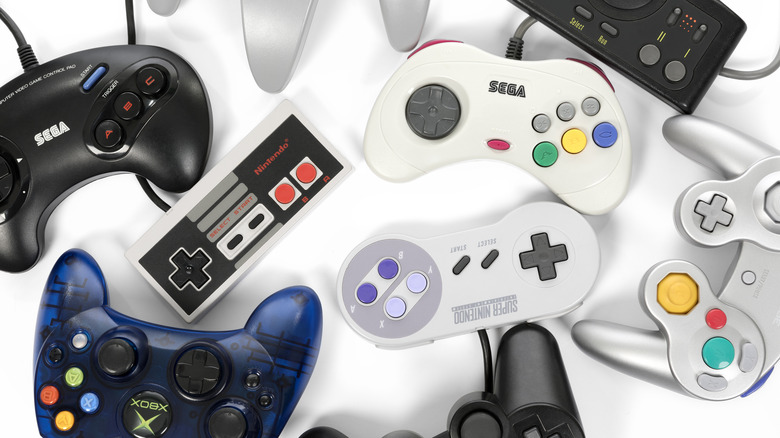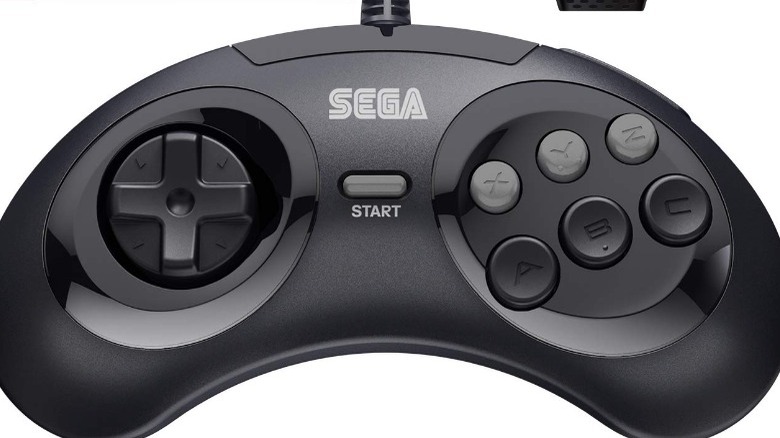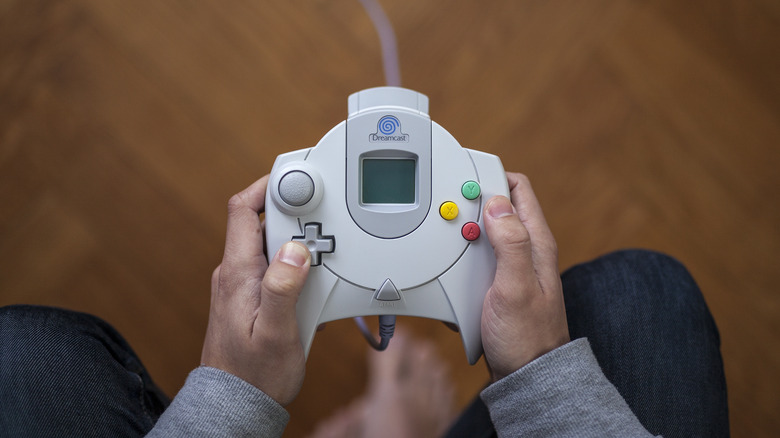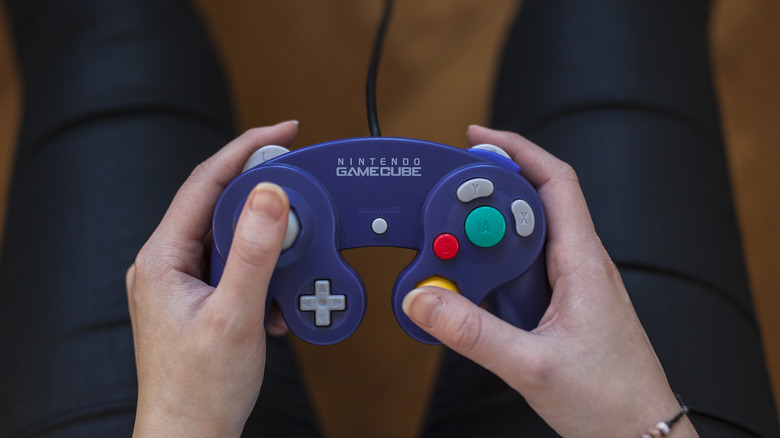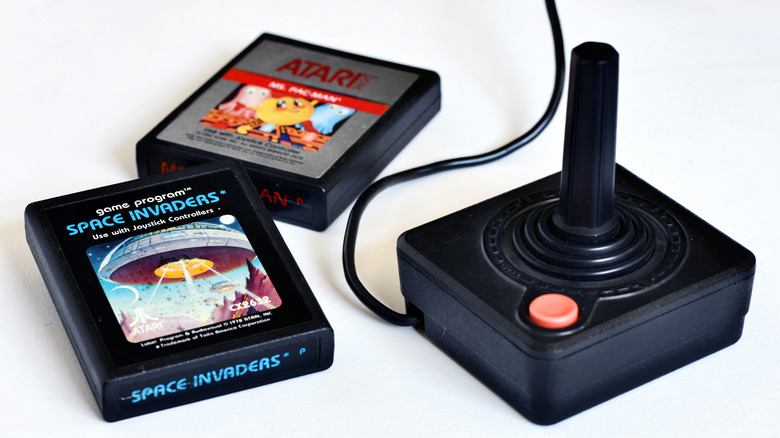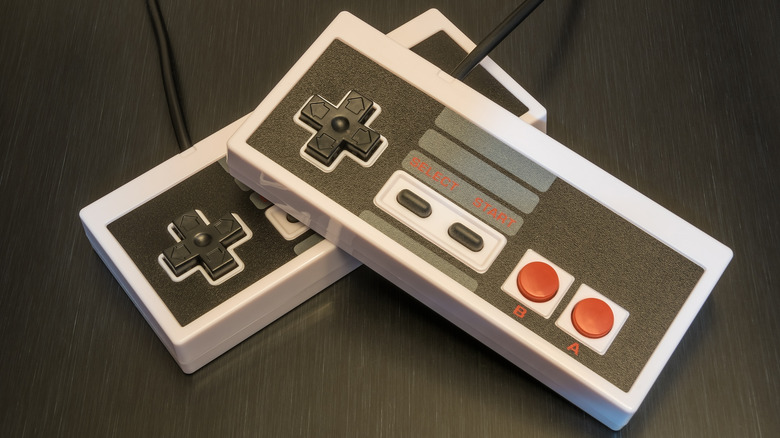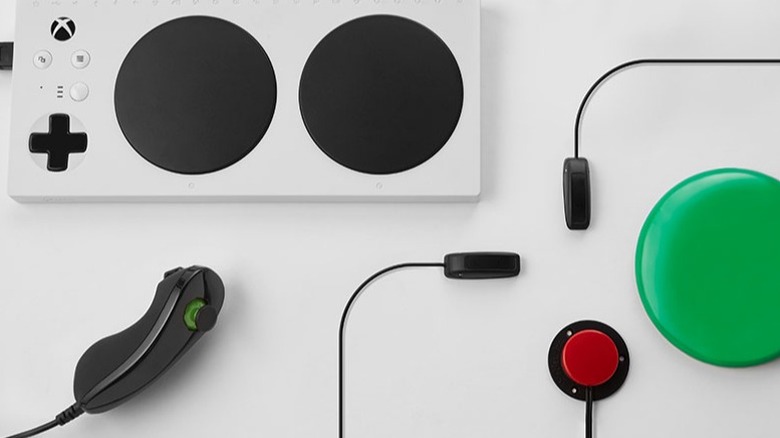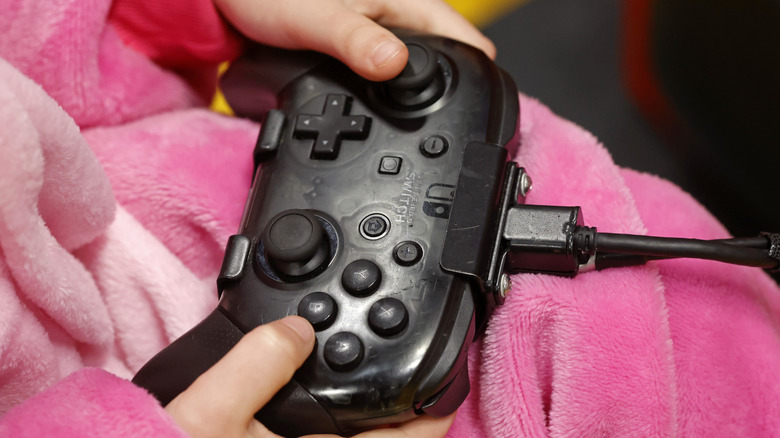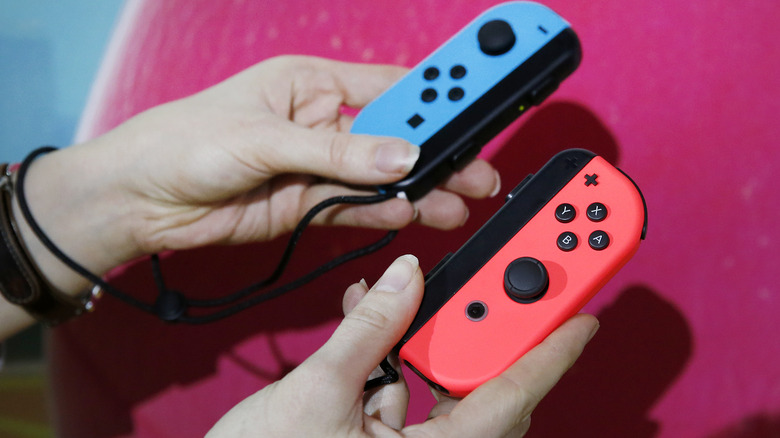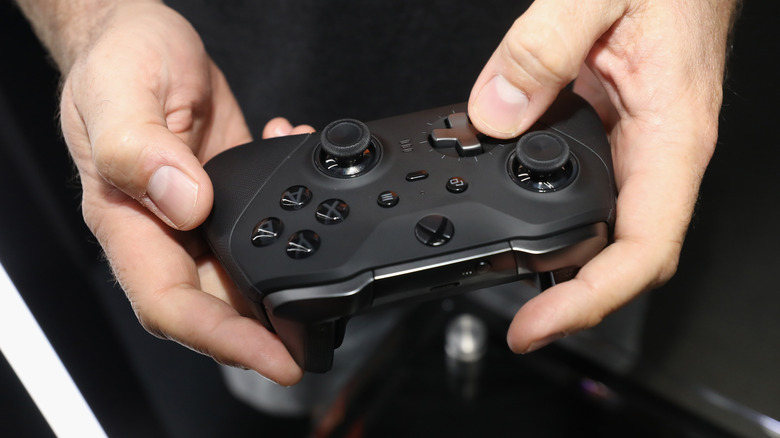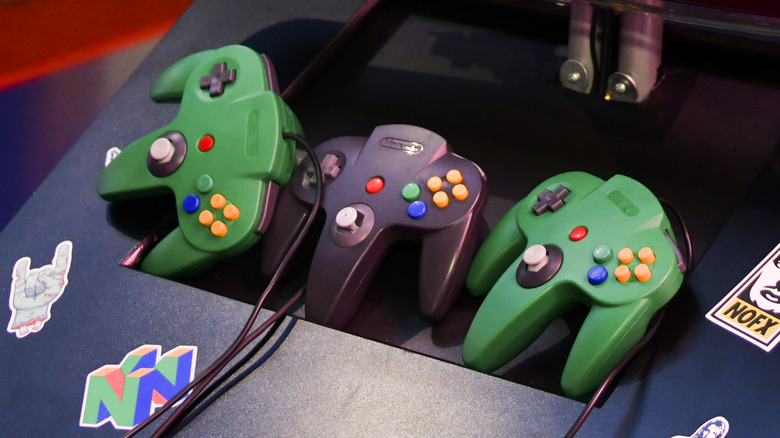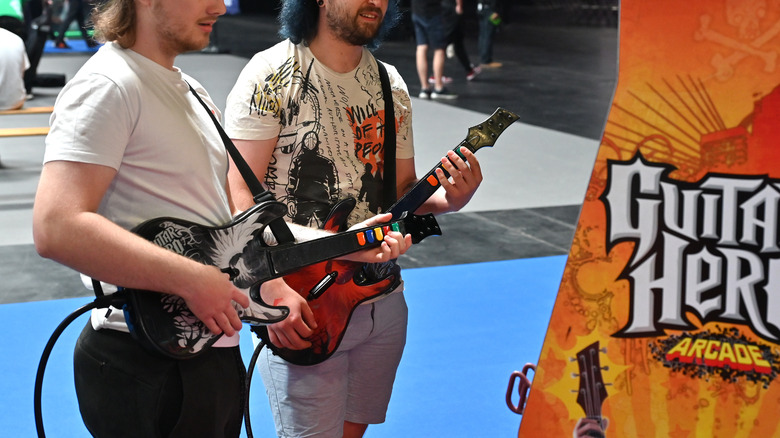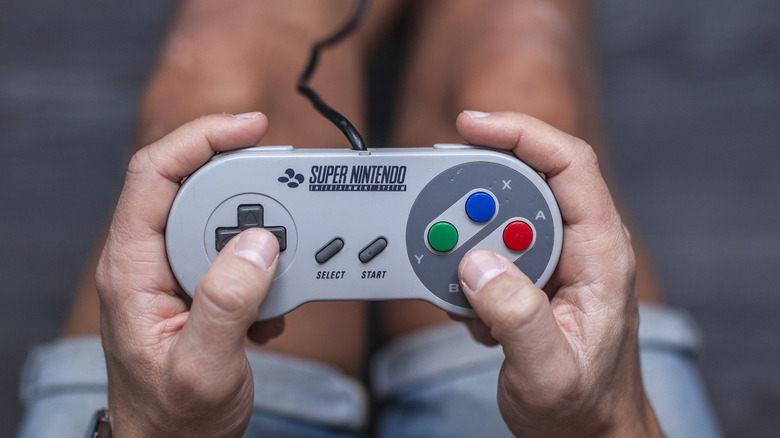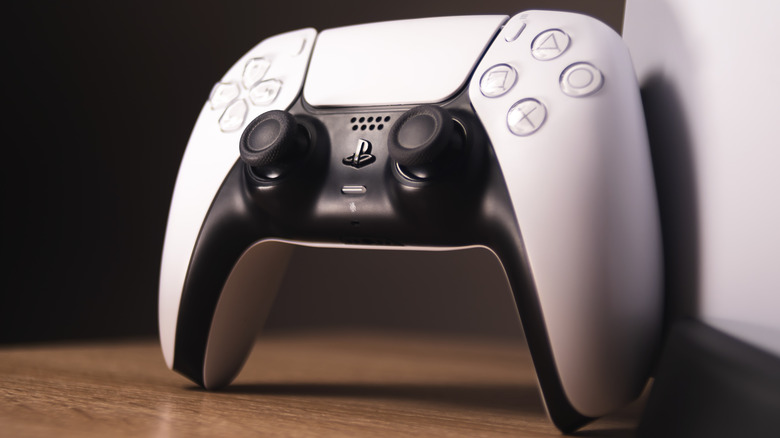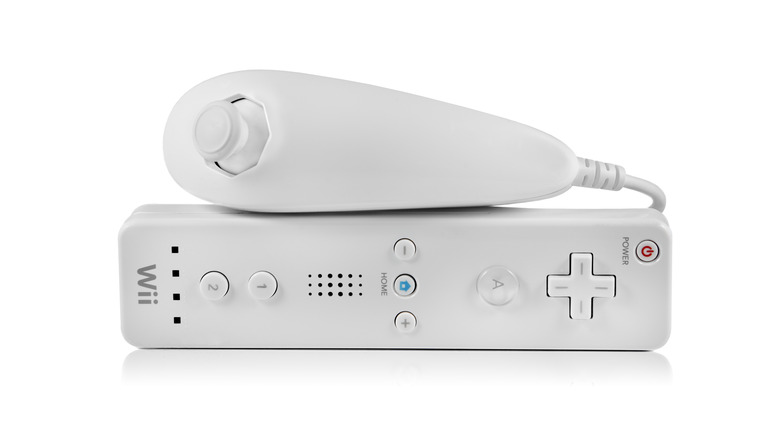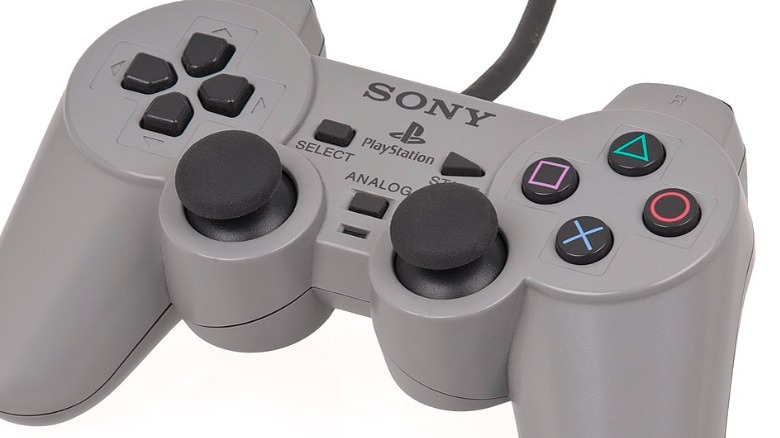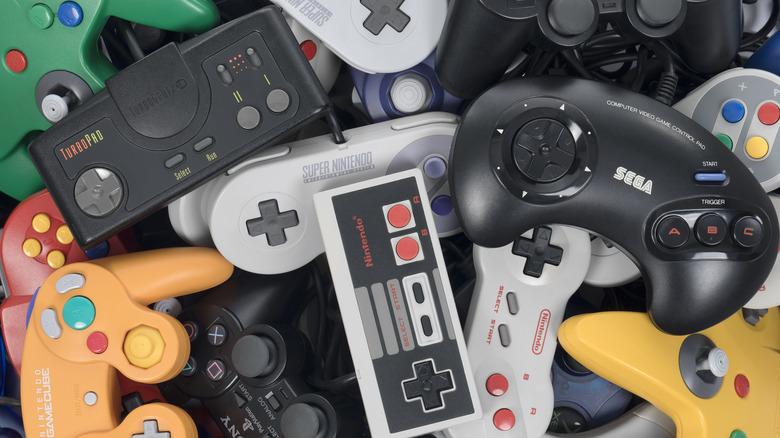The 15 Best Game Controllers Of All Time, Ranked
It doesn't matter whether you are a PC gamer or a console player, there is one thing that we all have in common — the controller. Outside of mobile gaming and handheld devices like the Nintendo DS or Game Boy, game controllers are essential. Almost every console ever released has a unique gamepad, while distinctive third-party options also exist to add new capabilities or introduce new features.
With the video game industry firmly established as a major and lucrative form of entertainment, companies have launched dozens of different consoles over the last few decades. Of course, that also means that there are many controllers out there, both good and bad.
Here, SlashGeaer has reviewed the best of the best. These controllers set new standards for gaming, revolutionized what it means to be a gamepad, and made playing games more accessible. We've based these rankings on first-hand experience, expert opinion from notable figures in the field, and the general popularity of controllers from players.
15. Sega Genesis/Mega Drive Six-Button Control Pad
Although the six-button control pad was not the controller that originally launched with the Sega Mega Drive, it did eventually go on to become the standard gamepad for the console. The system initially came with a similarly designed three-button control pad that — as you might have guessed — only featured three action buttons. That proved problematic when fighting games like "Street Fighter II" came along and required more options for pulling off combos and performing actions.
The result was the six-button control pad. Sega effectively kept the same ergonomic design that had made the first Sega Genesis controller stand out from its more rectangular and blocky counterparts from Nintendo. That made it a lot more comfortable to use, especially over extended gaming sessions. Arriving in 1993, this smaller, lighter controller optimized games that needed more buttons. With its predecessor, Sega's controller proved that these peripherals didn't have to be chunky or ugly, but could be made to fit cozily in the players' hands.
14. Sega Dreamcast
Long before Sony and Microsoft entered the gaming market, the only real competitor to Nintendo was Sega. The fellow Japanese company has a long history in the industry as a console manufacturer, as well as a games developer and publisher. At least, that was the case until the ill-fated Dreamcast flopped and led Sega to drop its hardware division completely. While the sixth-generation console couldn't compete with the GameCube, Xbox, and PlayStation 2, it did have a rather interesting controller that was very different from the offerings of other console manufacturers.
The Dreamcast controller was largely based on the Saturn 3D controller and wasn't the most comfortable to use. Many reviewers also pointed out that it was ugly and lacked some of the features of modern controllers, like twin analog sticks. But the gamepad also had some distinctive features that made it stand out in a crowded market. Chief among them were the dock connectors built into the controller that could hold additional accessories like the impressive VMU — essentially a memory card that could play mini-games and has its own screen and buttons. This allowed it to be used as a second screen during gameplay or to unlock extra capabilities.
13. Nintendo GameCube
After mixing things up with the Nintendo 64 controller in 1996, Nintendo took a more traditional route with its GameCube controller in 2001. This controller had two analog thumbsticks, four face action buttons, a standard D-pad, and two hybrid triggers. Despite taking a more conventional approach, Nintendo still didn't play it entirely safely, and the GameCube controller had some notable differences from other controllers of the time, including the PlayStation DualShock. That included a noticeably larger A button, the staggered analog stick layout, and a funky appearance that intended to make it more accessible to a wider market.
In many respects, it was nice to have a controller that wasn't a dull gray and had some style to it, especially in an era when controllers were all beginning to look very similar. The GameCube controller didn't do anything revolutionary, yet it kept that signature Nintendo charm even if the button layout takes a little getting used to. It was certainly comfortable to use and has plenty of fans, with the controller being the first to make the case for a staggered thumbstick layout rather than the symmetrical configuration of the PlayStation controllers.
12. Atari 2600 joystick
The Atari 2600 is the earliest console to feature on this list. Released in 1877, it was part of the second generation of home consoles, where systems tended not to be focused on just one game and could play multiple titles. As a precursor to the NES and other later systems, it doesn't have a controller that most gamers are familiar with but instead came with several options inspired by controls from arcade machines. The system initially hit store shelves with a joystick and rotary paddle controllers, known as CX10 and CX30, respectively.
It wasn't until several months after launch that Atari brought out the CX40, an updated joystick version that became an industry standard. Simple but elegant, it proved to be the ideal method of playing the basic games of the time. It became a staple of the gaming industry, was the default Atari controller, and was compatible with an array of other consoles, including the Commodore 64. The appeal of the CX40 only faltered as more complex games began to be released that required more than the single button it offered to work properly.
11. NES controller
Nintendo led the way in the early days of the gaming industry. Although the company was not the first to introduce a home console or a standalone controller, it did help set the standard for what was to come when it launched the NES in 1983. The NES controller was almost identical in function and design to the Famicom, albeit with a different appearance and color scheme from its Japanese counterpart.
Often referred to as being brick-like in shape, the NES controller featured the first D-Pad on a home console, two action buttons, and start and select buttons. Although it may seem incredibly basic by today's standards, it was advanced for the time and went on to be used by millions of gamers. The distinctive design and compact nature of this peripheral meant it was easy to use, could be held for long periods, and allowed for precise gameplay. It quickly became an instantly recognized part of popular culture and continues to feature in official Nintendo merchandise and accessories.
10. Xbox Adaptive Controller
The Xbox Adaptive Controller might not be a gamepad that many people are all that familiar with. That isn't a huge surprise, given that this isn't a piece of tech designed to be used by most players. Instead, Microsoft created a unique peripheral to make gaming more inclusive and accessible. It provides those who have disabilities that make using or holding a standard controller difficult a way to enjoy their hobby and not have to rely on expensive personalized solutions.
The controller works by allowing almost any other device to act as an input once connected to it. So in addition to the large face buttons, menu buttons, and D-pad, many other devices can be attached to the Xbox Adaptive Controller. That means things like other Xbox controllers and accessories such as foot pedals, and even microphones can be used to control the action on screen. The controller costs under $100 and features dozens of USB and 3.5-millimeter jacks so other devices can be plugged in, opening up gaming to a wider audience than ever before.
9. Switch Pro Controller
Strangely, one of Nintendo's better and most popular controllers is one that most people would probably consider relatively normal. The Switch Pro Controller was developed as an alternative to the Joy-Cons for those who wanted a more traditional setup for playing games on the Nintendo Switch. While there are many different options available to the Switch Pro Controller, this controller has established itself as a great gamepad, and one that firmly places function over style — making it a departure from many of Nintendo's other efforts.
While the Joy-Cons are a great way to experience Switch games, anyone planning on playing games like "The Legend of Zelda: Tears of the Kingdom" will want to get their hands on this controller. Sure, it is pricey at $80 and shortages might mean it is hard to come by, but for that price, you get a peripheral that has consistently been ranked highly by gamers and received top marks in reviews. With a long-lasting battery, support for HD Rumble, and motion controls, it is the perfect choice for those also looking for a new PC controller.
8. Joy-Cons
Nintendo has never created a controller that simply doesn't work — if you discount the miss that was the Wii U anyway — and its latest effort is the Joy-Cons for the Nintendo Switch. Taking inspiration from the Wii Remote, the Joy-Cons are versatile and portable controllers that work perfectly with the hybrid nature of the Switch. They can be attached to the console or detached, used as a pair, or operated individually as small gamepads for multiple users.
In terms of buttons, the Joy-Cons are somewhat lacking. They feature two face buttons, a shoulder button, a trigger, and a menu button on each Joy-Con. The right one also has a Home button, while the left one has a dedicated button for taking screenshots. Like the Wii Remote, the Joy-Cons utilize motion controls using an accelerometer and a gyroscope without the need for IR sensors or trackers. They also feature HD Rumble, providing tactile feedback in games.
7. Xbox Elite Controller Series 2
Even though Sony's controllers have always been more widespread due to the popularity of PlayStation consoles, Microsoft has been pretty consistent with the quality of its Xbox controllers. Stretching back to the original Xbox, as long as you discount the chunky and massive Duke controller that is, the Xbox controllers have had a similar concept that has certainly worked. Microsoft has seemingly taken an "if it ain't broke, don't fix it" attitude that has served them well. Even the less successful consoles like the Xbox One have still had great controllers.
The epitome of all that work is the Xbox Elite Controller Series 2. This pricey controller is essentially the perfect modern controller and works well for every genre and type of game, no matter whether a first-person shooter or an intense action platformer. Practically every element of the controller can be customized, from the swappable D-pads to the additional analog sticks, and it comes equipped with programmable paddles so you don't have to move your thumbs away from the sticks to press important action buttons.
6. Nintendo 64
No one can ever accuse Nintendo of being afraid to innovate, and nowhere is that better demonstrated than with the release of the Nintendo 64 controller. Sure, it looks strange and might seem like it was designed to be played by a being with three hands but the controller was actually way ahead of its time in many ways. Without it, many of the features you take for granted on modern gamepads may not exist.
Launching alongside the Nintendo 64 console in 1996, it was unlike any other Nintendo controller that had ever been designed. The controller was designed to be used in different ways depending on the game being played, featuring an analog stick, a Z-trigger, a D-pad, and nine other buttons. This made it a versatile controller, although it also meant that not every button could be used at the same time.
It popularized the analog thumbstick, which was important as games transitioned into 3-D environments. It also had space for a memory cartridge so players could easily take save games and settings with them, and worked with a Rumble Pak. This made it the first controller to incorporate force feedback during gameplay.
5. Guitar Hero guitar
Although "Guitar Hero" and "Rock Band" were not the first music rhythm games, they did popularize the genre. Unlike earlier titles such as "PaRappa the Rapper," these newer titles couldn't be played with a standard game controller and instead needed a special standalone peripheral. Although several instrument-shaped controllers would emerge, the guitar controller proved most popular and helped establish one of the most popular gaming genres throughout the late 2000s and early 2010s.
What made the "Guitar Hero" controller so good is that it made playing music in the game much more like the real thing. For many people, it was the closest they would ever get to being an actual Rock God and was a far more fulfilling experience than using a normal gamepad. Even though early developers thought the idea of a guitar controller was goofy, it proved to be a tremendous amount of fun as soon as they tried it for the first time. Players strum along with the music and hit notes on the fretboard to match the on-screen action, with extra features like a whammy bar adding a degree of customization.
4. Super Nintendo Controller
Following up on its success with the NES, Nintendo launched the SNES as its entry in the fourth generation of video game consoles. Like its predecessor, the SNES dominated the market in its day despite strong competition from Sega. A definite evolution rather than a revolution, the NES incorporated new chips and technology to improve the graphics and sounds of games while allowing for bigger, more open worlds. That same philosophy was present when it came to the controller, too.
The SNES controller includes several design changes and, even at a glance, it is clear that it is an improvement over its NES counterpart. It no longer has an entirely rectangular design, featuring a more rounded shape, and also introduced several additional buttons. These included two extra face buttons and two shoulder buttons. The layout of these buttons has been copied by manufacturers ever since and has made playing games on the SNES even better.
3. PlayStation 5 DualSense
To many people, the PlayStation 5 DualSense is already one of the best controllers that has ever graced the world of gaming. Launched alongside the PS5, this is arguably Sony's biggest evolution of its controller concept since the launch of the DualShock. When the gamepad was first unveiled, many were skeptical, especially since it looked like such a departure from what PlayStation fans had used for over two decades. Those fears proved ill-founded, though, and the DualSense has proved itself worthy thanks to its improved ergonomics and impressive features.
The DualSense comes equipped with a touchpad and all the buttons you'd expect on a modern controller. The main upgrades center around the triggers and the force feedback system. The resistance of each trigger can be altered on the controller itself through a handy switch, allowing players to customize the experience. The use of voice coil actuators rather than more traditional methods gives developers the option of applying specific and finely tuned haptic feedback. They also look great, and even come with a built-in speaker and microphone so you don't have to rely on a headset to chat.
2. Wii Remote
The Nintendo GameCube was far from the roaring success that Nintendo had experienced in its earlier history. While the likes of the NES, SNES, and even Nintendo 64 had been runaway successes, the GameCube struggled to compete directly with the PlayStation 2 and Xbox. Nintendo subsequently decided to go in a new direction for its seventh-generation console, setting the Wii apart from everything else on the market. The strategy proved effective, and the Wii became one of the best-selling consoles of all time.
Perhaps the single biggest factor in the appeal of the Wii was its motion controls. The Wii Remote and companion Nunchuk accessory changed the way people played games. Instead of relying solely on pressing buttons and moving analog sticks, these controllers gave players the ability to translate their real-life movements into action in the games. Using an IR sensor and an accelerometer, the Wii could determine where the Wii Remote was and what you were doing. It revolutionized gaming and brought motion controls into the mainstream.
1. PlayStation DualShock
The PlayStation DualShock was not the original controller for the first PlayStation console. It wasn't even the first Sony controller to feature twin analog thumbsticks. Yet, the DualShock became the standard default for PlayStation systems after it hit store shelves and was so successful that Sony stuck with the same concept up to the PS4 with the DualShock 4 — which became the best-selling gamepad of all time.
The main difference between the DualShock and other PlayStation controllers is the fact that it had improved rubber thumbsticks and two vibrating motors to provide a more varied level of force feedback. It also continued to use PlayStation's signature shape and button combination, something that remains to this day, with all future controllers from Sony evolving from the original DualShock. Not only that, but the DualShock also set the standard that all future controllers would have to match and be measured against. Few pieces of gaming technology have been so influential and important.
Why these controllers made it to this list
Ranking the best controllers of all time is a difficult task as there is no real objective measurement to base rankings on. To try and be as fair as possible, this article has used various metrics, ranging from expert opinions from respected journalists, popular feelings from gamers, and the writer's own personal experience as a gamer who has used every controller in the list.
